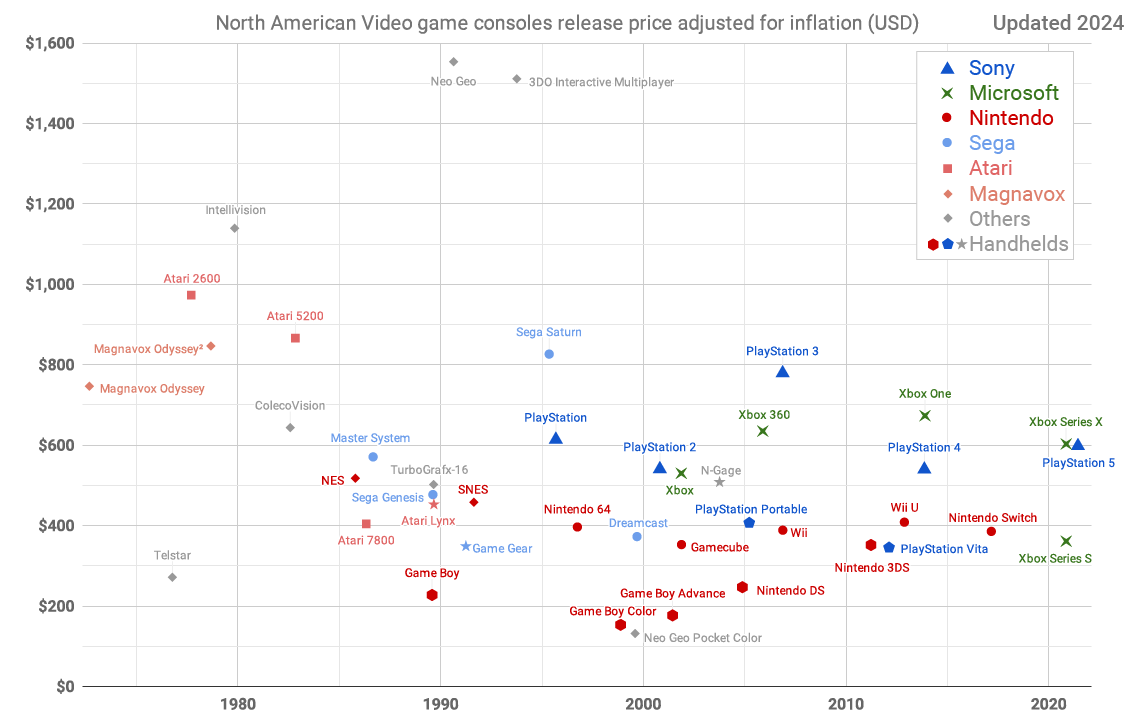136
this post was submitted on 17 Sep 2024
136 points (98.6% liked)
Data is Beautiful
1163 readers
1 users here now
Be respectful
founded 4 months ago
MODERATORS
you are viewing a single comment's thread
view the rest of the comments
view the rest of the comments

Not surprised about the NeoGeo considering it was literally a home arcade machine. For people who aren't aware, arcade machines historically tended to use a lot of bleeding edge technology. For an example, iirc Sega's Daytona USA had custom boards and chips based on tech used for US milsims and couldn't be played on a home console without downgrades until I thiiiink the PS3/Xbox 360? This was a game that came out in fucking 1994 by the way. I mean, compare NeoGeo games to SNES games and tell me which ones looked nicer, and then realize the SNES came out after the NeoGeo.
Oh yeah, also NeoGeo carts were chip compatible with their arcade counterparts. The PCB was different, but you could desolder the chips from an arcade cart and solder them onto a console cart or vice versa.
As for the 3DO... The 3DO was licensed tech; so the 3DO company didn't actually make consoles, they licensed the hardware to companies like Panasonic. As such, the companies had to charge a much higher price than usual, as normally console manufacturers make their profit from licensing fees for dev kits and game sales, but the manufacturers couldn't do that because they weren't the ones collecting the licensing fees. However that also meant that some versions of the 3DO sold for well below their MSRP.
Also the 3DO was a disc-based system capable of 3D graphics that includes features other consoles couldn't match like proper perspective correction and non-dithered shadows, along with planned (vaporware) online functionality; all a year or two before the N64, PlayStation and Saturn came about. In fact, what I've read is that developers who started out developing for the 3DO hated trying to port their games to other consoles because the 3DO's architecture included a lot of shortcuts that devs could take that other consoles didn't have.
In other words, there was a reason the NeoGeo and 3DO were so expensive lol.
The NeoGeo and 3DO were essentially the custom gaming rigs of yesteryear and their price was in line with that. You would have been hard pressed to build a PC in 1990 / 1991 for $1,600 that was capable of what the NeoGeo was doing. In fact I'm not even sure it would have been possible as commodity PC hardware that could do that kind of pixel and audio pushing didn't really exist yet.
I've always wondered what the modern equivalent of the NeoGeo or 3DO would look like, capability-wise.
Would it abandon traditional polygon rendering for gaussian splatting?
Would it be able to do movie-quality path tracing?
Would it have multi-level hardware-based procedural generation (each level getting more precise in terms of scale)?
Would it be a SoC the size of someone's head?
Would it have a CPU that isn't measured in normal cycles but instead has sub-PUs coordinated by the CPU which run at their own speeds (with PUs for simpler instructions running faster than PUs that incorporate instructions that'd traditionally take multiple steps)?
Would it have an AI processor on par with an Nvidia A10 (or whatever the current top-of-the-line AI chip is)?
The Neo Geo was marketed specifically to rich people. It was aimed at people who wouldn't even look at the price tag.
Didn't 3DO have deformable terrain, too? Whatever technology enabled that, it was a long time before I saw another console capable of it.
What impressed me is that the next console to bear the NeoGeo name is the cheapest of them all.